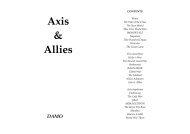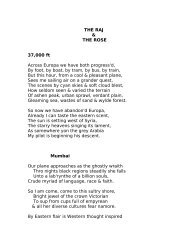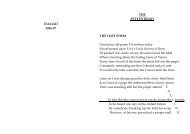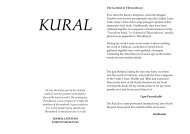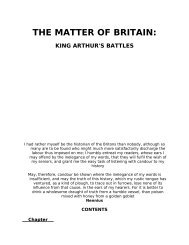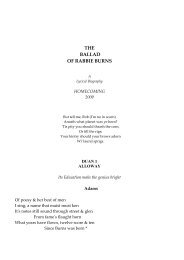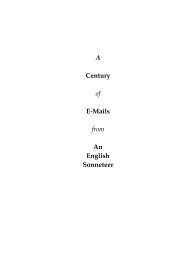Translating Thirukkural.pdf - damowords
Translating Thirukkural.pdf - damowords
Translating Thirukkural.pdf - damowords
Create successful ePaper yourself
Turn your PDF publications into a flip-book with our unique Google optimized e-Paper software.
socio‐economic values & proper political processes are elucidated. In essence it outlines anideal state of nationhood. The last mupaal, Imbam (love) relates the many phases of love,placing an especial emphasis on the suffering that parted lovers endure.TranslationsThe Kural were first brought to the attention of Europe by a series of missionaries enteringTamil Nadu via Madras (British), Pondicherry (France) & Tranquebar (Danish). The veryfirst translation was in Latin & made by an Italian priest, Father Constantius Beschi, in theearly eighteenth century. The next translator was the German AF Cammera, whose workwas published in Leipzig in 1803. Then came the French Savant, M Ariel, who released histranslation in 1848. It was he who proclaimed the Kural as “One of the highest & purestexpressions of human thought.” These men were the pioneers, whose efforts helped to fanthe flames of interest in this ancient text, which ever since has burnt fiercer & fiercer. Theirefforts in translating Tamil can be compared to the discovery of the Rosetta stone, butinstead of using that hieroglyphic key to open the doors of ancient Egypt, they have insteadunlocked the wonders of the human soul.Once the world became aware of these compact distiches of quintessential wisdom, theKural have been translated into over 6o languages across the world, including 13 otherIndian languages. The first English translation was in 1853, by the Reverend Drew, whosework would inspire GU Pope, a gargantuan figure of Kural lore. History now sees GeorgeUglow Pope as the great standard bearer of Tamil, that ‘noble language’ as called it,immersing & devoting his entire life to its study & translation. His first lesson in thelanguage occurred when he was an eighteen‐year‐old lad in England. Later that year hearrived in Madras & upon first hearing the true beauty of Tamil on the lips of a humblefisherman, he became determined to learn all about the language & to be able to speak it asfluently as a native. He set about meeting the greatest Tamil scholars of the day, & hadsoon unleashed his genius upon its life‐long mission. By 1840 he was staying at Mylapore,about which he would later write, “While visiting the villages around here, thatenthusiasm for the great Tamil poet was first kindled which has been an important factorin my life.”ʹWithin a short time of my learning Tamil, I commenced translating <strong>Thirukkural</strong>, for thebenefit of Europeans,” he said, & after almost fifty years, on September 1st, 1886, he wouldcomplete his noble task, which by now he had declared the ‘masterpiece of humanthought.’ By February 1893 he would also add an excellent, poetic translation of theNaltiyar to his many achievements in Tamil, which included an unfinished, yet massively




